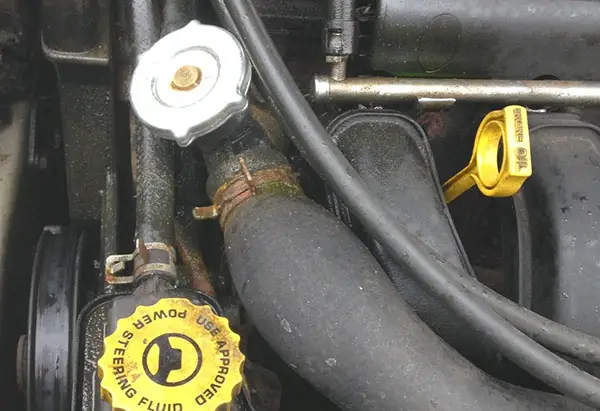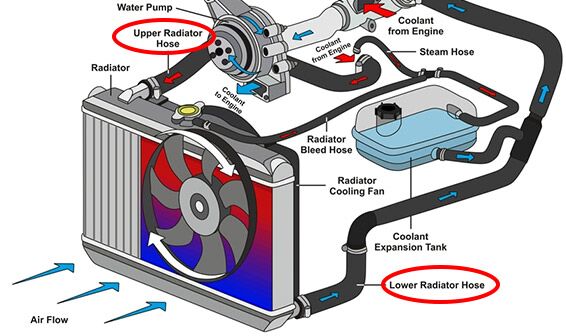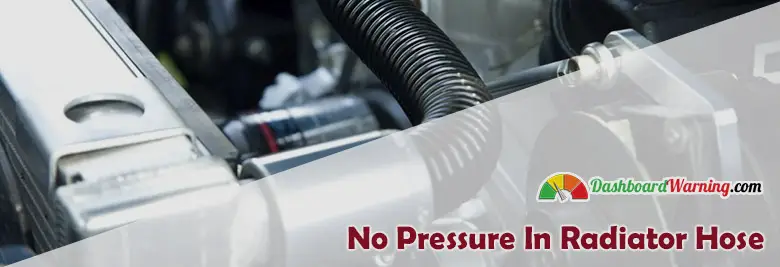What causes a no pressure in the radiator hose fault? What causes no pressure in the radiator hose? Engine equipment needs lubrication at certain intervals to prevent wear. For this reason, they can operate smoothly for hundreds of kilometers without any malfunction.
Among these parts, coolant is important. The coolant creates multipurpose energy and heat. While an explosion occurs at a maximum level every minute, a system is needed in the background to keep the engine running efficiently.
This is where the no pressure in the radiator hose fault comes into play. This article will discuss the possible causes and solutions for your radiator hose pressure failure.
See also: How to Trick a Mass Air Flow Sensor
What Causes No Pressure in Radiator Hose Fault?

Generally, under five main items, no pressure in radiator hose error is examined. Mostly, you will not get a pressure failure in the radiator hose other than these five faults. These are;
- Low Coolant Level
- Clogged Radiator
- Water Pump Malfunction
- Opened Thermostat Valve
- Air Pocket
The main components of the cooling system in vehicles are as follows;
- Hoses
- Water Pump
- Coolant Tank
- Radiator Fan
- Coolant Temperature Sensor
- Heater Core
In this system, which works entirely according to the laws of physics, the water pump circulates between the engine layers, where it absorbs heat. Since the engine in the vehicle needs to cool down, the coolant greatly reduces the temperature.
See also: Chevrolet Cruze Dashboard Warning Lights, Symbols and Meanings
No Pressure in Radiator Hose: Causes and Solutions

Low Coolant Level
Detecting a fault in the cooling system is difficult, even for a professional mechanic. Place a piece of cardboard under the engine compartment when you park your car.
Place weights on the corners of the cardboard to prevent it from blowing away when it waits until morning; look at the cardboard under the vehicle to see from which side the leak dripped. This will make it easier for you to check for leaks. Sometimes, locating the leak in minutes without waiting for a day is possible.
Bad Thermostat
Check the thermostat valve. Usually, a heat-sensitive wax is stored inside, which is sensitive to the temperature of the coolant.
A temperature gauge is the easiest way to tell if the thermostat has a problem. Drive the car and check that the thermostat is where it should be. If not, the thermostat is stuck open.
See also: Chevrolet Aveo Dashboard Warning Lights and Meanings
Air Pocket
An air pocket is the most common cause of no pressure in the radiator hose. You need to check if there is any air in the system. Air pockets will disrupt the flow, resulting in reduced stress.
Clogged Radiator
A clogged radiator is a serious problem. This is a minor problem if you get a no-pressure or low-pressure error in the radiator hose. Keep an eye on the travel indicator; if it reaches the red zone, stop the vehicle and let it cool down.
Faulty Water Pump
You will know something is wrong if there are leaks around the water pump. If there are no leaks, look for dirt buildup in that area. A bad water pump usually results in rust, increased temperature, and a buzzing sound.
No Pressure in Radiator Hose but Not Overheating: Unraveling the Mystery
Understanding the cooling system's operation is essential for maintaining an efficiently functioning vehicle. A common issue many car owners face is the absence of pressure in the radiator hose without the car actually overheating. On the surface, this might sound paradoxical, but there are logical reasons behind this occurrence.
Why might there be no pressure?
- Intact Radiator Cap: Often, the pressure within the radiator hose is maintained by a sealed radiator cap. If the lid is intact and functioning properly, it might not allow excess pressure to build up in the hose, even if the coolant is circulating at the right temperature.
- Effective Coolant Flow: An efficient water pump and an unblocked radiator ensure coolant flows seamlessly through the system. When there's a constant flow without any hindrance, the chances of pressure buildup in the radiator hose are minimal.
- Absence of Air Pockets: We know air pockets can cause pressure inconsistencies in the radiator hose. However, a well-maintained cooling system, which has been periodically bled, will likely have fewer air pockets. This ensures a steady coolant flow without causing significant pressure in the hose.
Implications of No Pressure:
While no pressure might seem concerning, in scenarios where the car isn't overheating, it may not necessarily indicate a problem. However, it's crucial to be vigilant.
- Regularly inspect the radiator cap to ensure it seals correctly.
- Monitor coolant levels and top up if necessary.
- Check for leaks periodically to ensure the integrity of the cooling system.
- Always monitor the temperature gauge to detect any overheating issues at the earliest.
In conclusion, while a lack of pressure in the radiator hose without overheating can be puzzling, understanding the cooling system's nuances can help demystify the phenomenon. However, regular maintenance and inspections are essential to ensure the system remains in optimum condition.
How can I feel pressure in my car coolant system?
FAQs About No Pressure In Radiator Hose
Does the radiator hose need to be pressurized?
The radiator hose must be intact. You should not be able to touch it because of the heat circulating inside. Most vehicles stabilize this system so that it operates at a coolant temperature.
Why does the radiator hose swell?
The radiator hose usually withstands high temperatures. However, if the coolant rises to high enough levels to meet the engine's wear-and-tear heating, this will cause the radiator hose to swell.
What causes a radiator not to build pressure?
If the thermostat fails, the system will not know when to release fluid into the radiator. If the water pump fails, the system will not have enough pressure to circulate the coolant and keep things working correctly. Worse, if either of these things happens, the radiator won't do what it should, and your vehicle may overheat.
What controls the pressure in the cooling system?
The pressure cap is a type of valve that controls what pressure is in the cooling system.
What causes pressure in the radiator hose?
If your engine's thermostat is stuck or something else is wrong, you may have coolant pressure that has caused the hose to swell. Swollen hoses need to be replaced as soon as possible.
Was this page helpful?




The radiator hose can cause a leak due to the following issues:* Busted hoses - A loose hose clamp will cause pressure in the radiator hose, thus rupturing it.
* A hole in the radiator hose - The leak is caused by a hole in the hose.
* Insufficient air flow - The hot engine can cause too much pressure and lead to leaks or a blown hose.
* A kinked or pinched radiator hose - Pinching or kinking in the area of the connection point on either end of the hose can cause a leak.
* Worn-out radiator hoses - If there is enough wear and tear on the hoses, they may start leaking due to lack of elasticity.